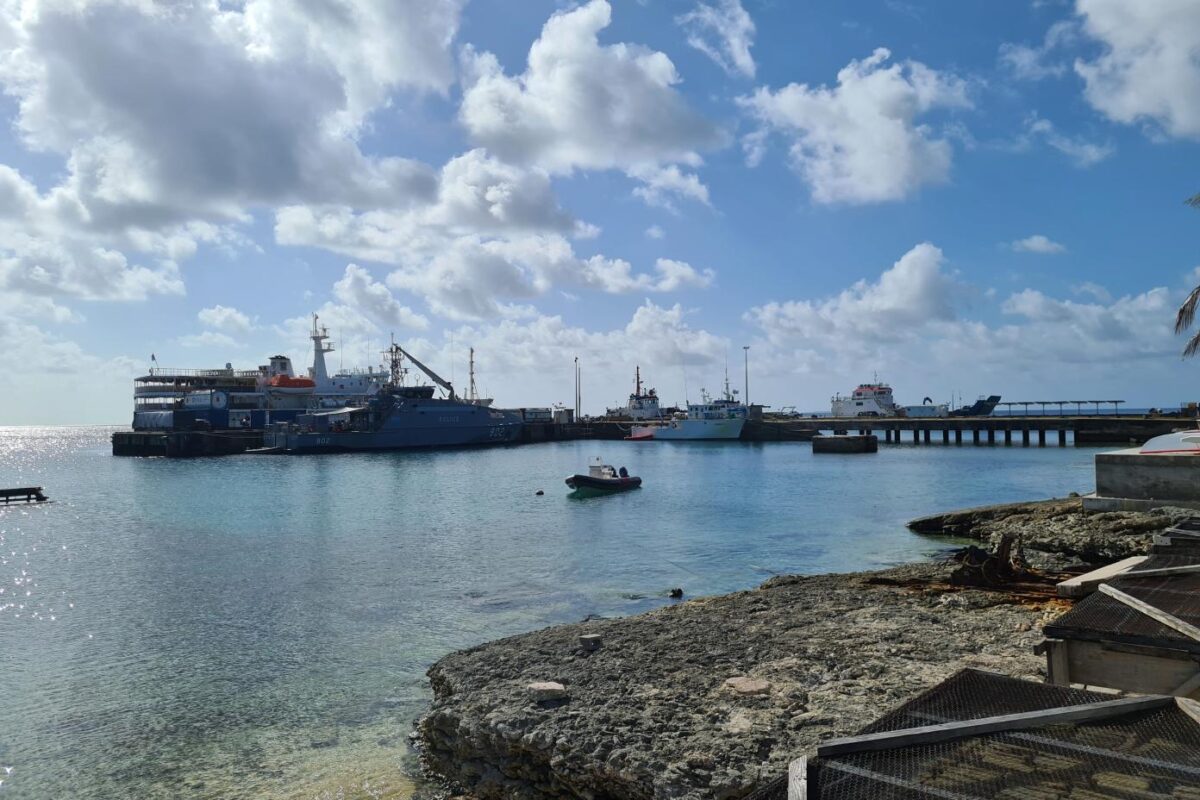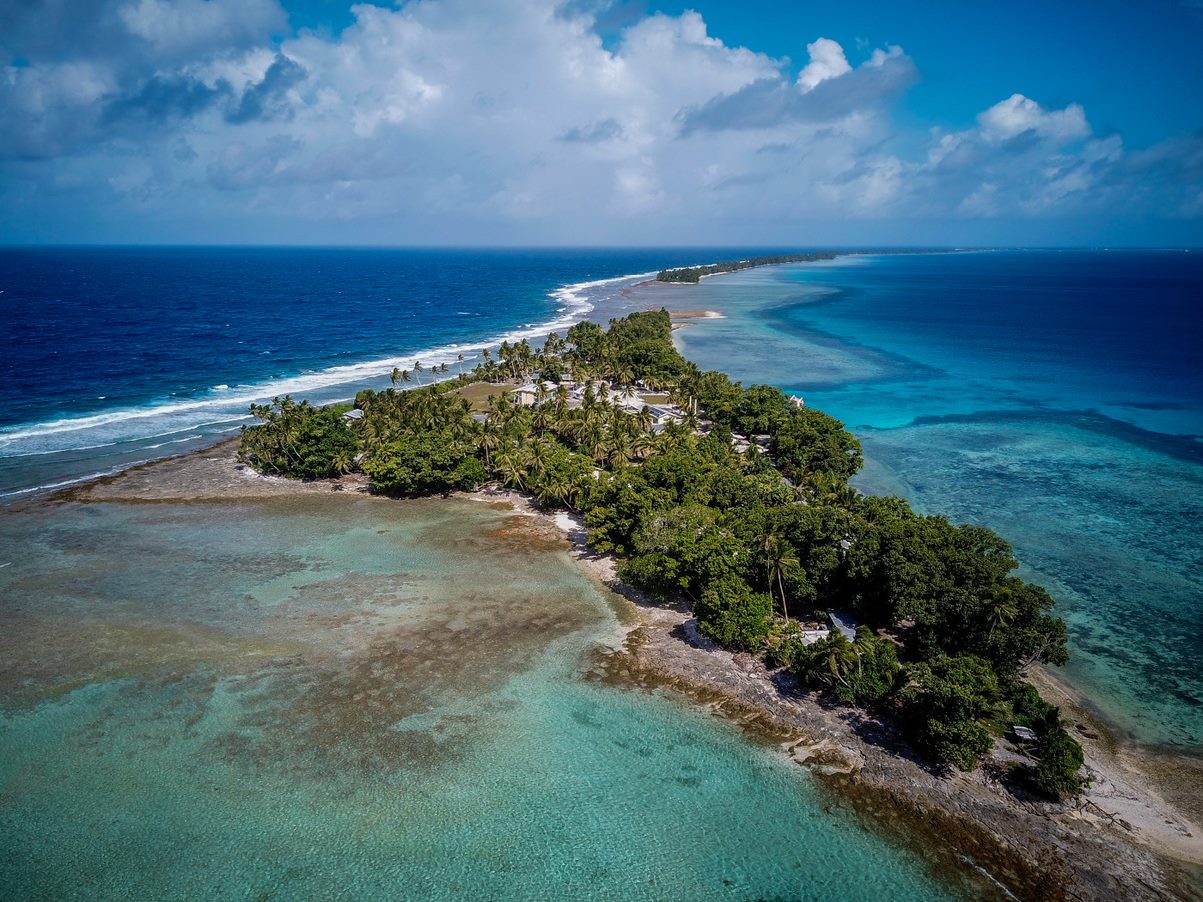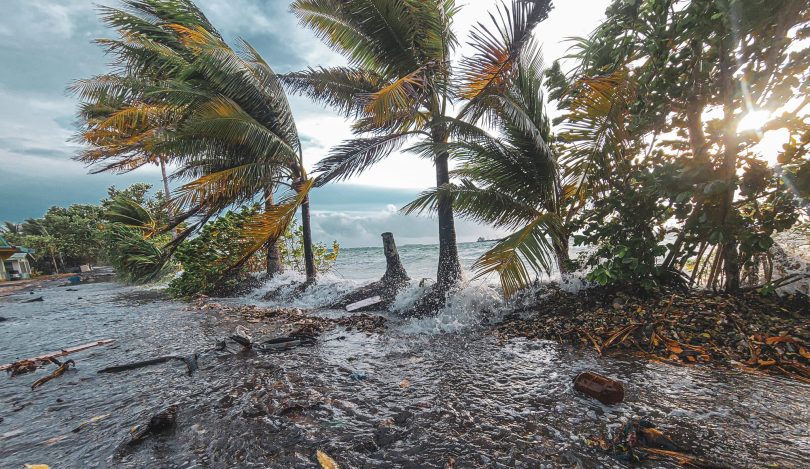Tuvalu set to begin construction of coastal protection infrastructure on Funafuti under the Tuvalu Coastal Adaptation Project
The UN Development Programme (UNDP) through the Tuvalu Coastal Adaptation Project (TCAP) this week welcomed the clearance of the first shipment of five containers of Geotextile Bags in the capital Funafuti. Its arrival – coordinated by the project’s civil works contractor, Hall Contracting – is the first of dozens under the project, with construction of coastal protection infrastructure set to begin on Funafuti from mid-October 2022.
“We are extremely thrilled to see the first consignment of Geotextile Bags, which landed in Funafuti in August, signaling the commencement of the coastal protection construction under TCAP,” said Minister for Finance, Seve Paeniu. “As we know, the sea level near Tuvalu has risen and will continue to rise throughout this century. Our nation is among the most vulnerable countries in the world to this trend, and to inundation due to intensifying storms – protecting communities and key infrastructure is an immediate priority and one the government is pursuing alongside long-term adaptation.”
“With the backing of the Green Climate Fund, one of the key goals of the Tuvalu Coastal Adaptation Project is to reduce the vulnerability of key coastal infrastructure including homes, schools, hospitals,” said UNDP Pacific Office in Fiji Resident Representative, Levan Bouadze. “This is the first large-scale coastal adaptation project of its kind in a Pacific Ocean atoll country and its success is important not only to Tuvalu, but also as an example for other nearshore and atoll communities. It is an immensely exciting moment with coastal protection works set to begin on Funafuti.”
Under TCAP, the development of 7.3 hectares of new raised, safe land on the lagoon shore in Funafuti will provide the only longer-term flood-free land on the island given accelerated rates of sea level rise. Meanwhile, a mixture of “hard” and “soft” approaches – which seek to maintain and augment the naturally protective and responsive shoreline of the islands – have been designed for the outer islands of Nanumea and Nanumaga.
Like many of the atoll islands of Tuvalu, the three project islands targeted for infrastructure are highly exposed to marine hazards and coastal flooding. In 2015, storm waves generated by Cyclone Pam overtopped natural protective shorelines on Nanumea and Nanumaga and flooded settlements and low-lying areas. On Nanumaga, the waves damaged and flooded buildings, roads, property and crops. As a result, more than 300 people – mostly women, children and the elderly – were displaced.
While the capital Funafuti escaped major damage from Cyclone Pam, it is a very low-lying island. In February 2006, during the highest tide on record (3.4 metres), 40 percent of the central area of Fogafale was below sea level for a few hours. The ever-increasing impacts of sea level rise make such flooding worse year-by-year.
“Designing and constructing coastal protection in low-lying atoll countries such as Tuvalu is complex,” said TCAP’s engineer James Lewis. “In addition to initial capital expenditure, key considerations are the availability of suitable materials and contractors, the transportation of materials, machinery and labour over large distances to remote islands, and the environmental, social, and cultural sensitivities unique to each location.”
“There are undeniable technical and logistical challenges,” agreed UNDP’s Coastal Adaptation Specialist, Arthur Webb. “But there is huge importance in TCAP providing solutions that are practical, technically-sound, and that demonstrate the potential to address the challenges being faced by Tuvalu due to sea level rise.”
“Of course, the most important thing is that we design evidence-based interventions that will address the challenges at hand and do so in a way that is lasting and satisfying to communities. For TCAP, this has meant gathering a great deal of scientific data while looking at best practices and lessons from other similar initiatives, all in the context of ongoing stakeholder consultation at the national, district and community levels,” said TCAP’s National Project Manager, Alan Resture.
Prior to the COVID-19 pandemic, construction of coastal protection under the project had been slated to begin early 2021, however travel restrictions across the region meant that progress on some in-country activities such as capacity building and infrastructure construction had been delayed.
However, with relaxing restrictions through 2022, and following a successfully concluded competitive bidding process, Hall Contracting, Australia’s largest privately-owned dredging, civil and marine construction company, was selected in May 2022 to undertake construction on the three project islands over the next two years.
With machinery on board and enroute, work is now expected to begin in a matter of weeks.
On Funafuti island – where the majority of Tuvalu’s economic, social, political, and institutional assets are concentrated – a 780-metre long, 100-metre wide bunded reclamation will be constructed along the Vaiaku waterfront to the north of Queen Elizabeth Park.
Designed using the best available science, projections, and modeling (including of the most extreme conditions by the end of the century), and using around 250,000 cubic meters of sand dredged from Fogafale Lagoon, the reclamation is the biggest and most complex of TCAP’s coastal protection works. On completion in early 2024, the bund will be the highest land on the island – around 2.4 metres above the Highest Astronomical Tide – and should remain flood-free and safe for at least the next 80 years.
Also on Funafuti, construction of a small boat harbour along the eastern end of the reclamation will provide safe, all-tide access to local vessels. Along with safe mooring, the harbour will act as a major stormwater channel for the reclamation and from the adjacent village, providing adequate drainage during the wet season.
More than 400 kilometres away on Nanumaga, a 665-metre Berm Top Barrier – consisting of 20-metre long Geotextile Mega Containers, covered with locally-sourced fill and revegetated – will be built on the western coast of the island, reducing the risk of wave overtopping during large storm events. A new concrete boat ramp will raise and extend the existing ramp over the berm and into the village centre.
On Nanumea, Tuvalu’s northernmost atoll, a 1,330-metre Berm Top Barrier – will also be installed on the western coast of the island. The construction of seven, precast concrete, 25-metre long Reef Top Barriers on the nearshore reeftop, as well as a 170-metre long concrete “Seabee” seawall, replacing a revetment that failed during TC Pam will also help protect community assets from storm waves.
TCAP is seeking to create short- and medium-term jobs for local labour, especially youth and women, during construction and afterwards in monitoring and maintenance. Local persons will be trained to international standards gaining lifelong skills to be utilised into the future. The arrival of workers is also expected to present economic opportunities, including in accommodation, catering and washing services, and for local enterprise, for example in the sale of handicrafts and traditional food. Hall Contracting will also be seeking local supply of coconut and Pandanus tree seedlings for revegetation.
Following completion of works, the disturbed areas will be rehabilitated, including revegetation in some areas. Once fully grown, the new vegetation will help to stabilise the measures, provide habitat for wildlife, and offer shade and shelter along the shoreline. The revegetation works represent an opportunity for community members to get involved, both as contracted labour to do the planting, but also in the provision of plants – nurseries will be needed to grow sufficient numbers of plants.
This story was originally published at UNDP on 20 October 2022, reposted via PACNEWS.




